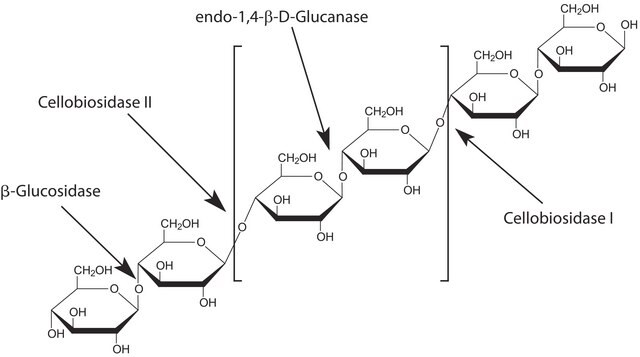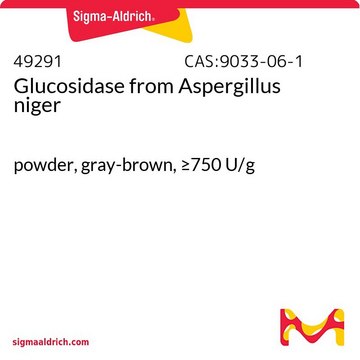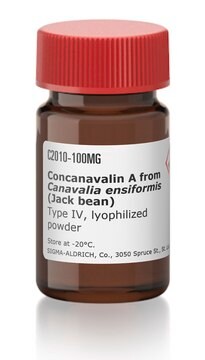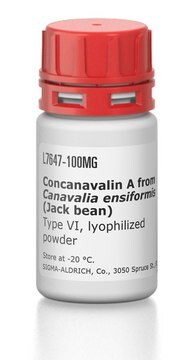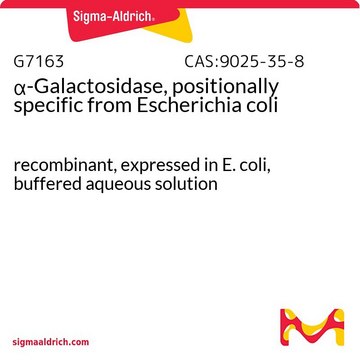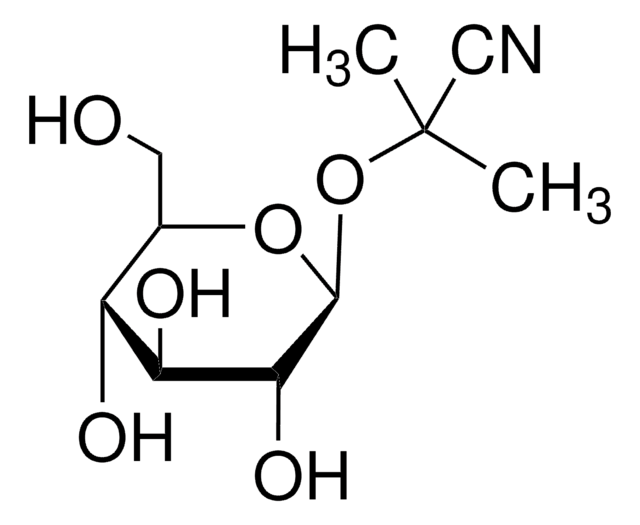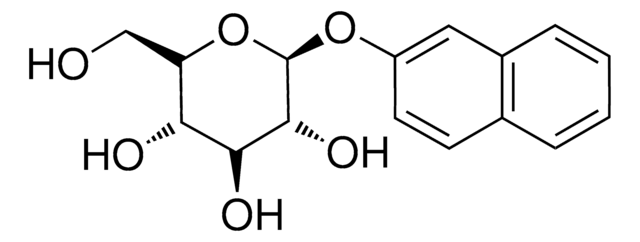G4511
β-Glucosidase from almonds
lyophilized powder, 10-50 units/mg solid
Synonym(s):
β-D-Glucoside glucohydrolase
About This Item
Recommended Products
form
lyophilized powder
Quality Level
specific activity
10-50 units/mg solid
mol wt
50-75 kDa
greener alternative product characteristics
Waste Prevention
Design for Energy Efficiency
Learn more about the Principles of Green Chemistry.
sustainability
Greener Alternative Product
impurities
salt, essentially free
greener alternative category
, Enabling
storage temp.
2-8°C
Looking for similar products? Visit Product Comparison Guide
General description
Application
- in enzyme inhibition studies by 1,5-dideoxy-1,5-imino-d-xylitol(DIX) derivates
- as a control in for comparison of soybean isofavone glycosides degradation by β-Glucosidase from Talaromyce leycettanus
- as a medium component during saccharification and fermentation of yeast
Biochem/physiol Actions
Unit Definition
Preparation Note
inhibitor
Signal Word
Danger
Hazard Statements
Precautionary Statements
Hazard Classifications
Resp. Sens. 1
Storage Class Code
11 - Combustible Solids
WGK
WGK 1
Flash Point(F)
Not applicable
Flash Point(C)
Not applicable
Personal Protective Equipment
Certificates of Analysis (COA)
Search for Certificates of Analysis (COA) by entering the products Lot/Batch Number. Lot and Batch Numbers can be found on a product’s label following the words ‘Lot’ or ‘Batch’.
Already Own This Product?
Find documentation for the products that you have recently purchased in the Document Library.
Customers Also Viewed
Articles
Today, diverse studies report the benefits of probiotics, such as inhibitory effects on pathogens, aid in the management or prevention of chronic intestinal inflammatory diseases or atopic syndromes, and support to the immune system. Potential beneficial applications abound, researchers continue to evaluate the effictiveness and clarify the mechanisms of action of probiotics.
Our team of scientists has experience in all areas of research including Life Science, Material Science, Chemical Synthesis, Chromatography, Analytical and many others.
Contact Technical Service